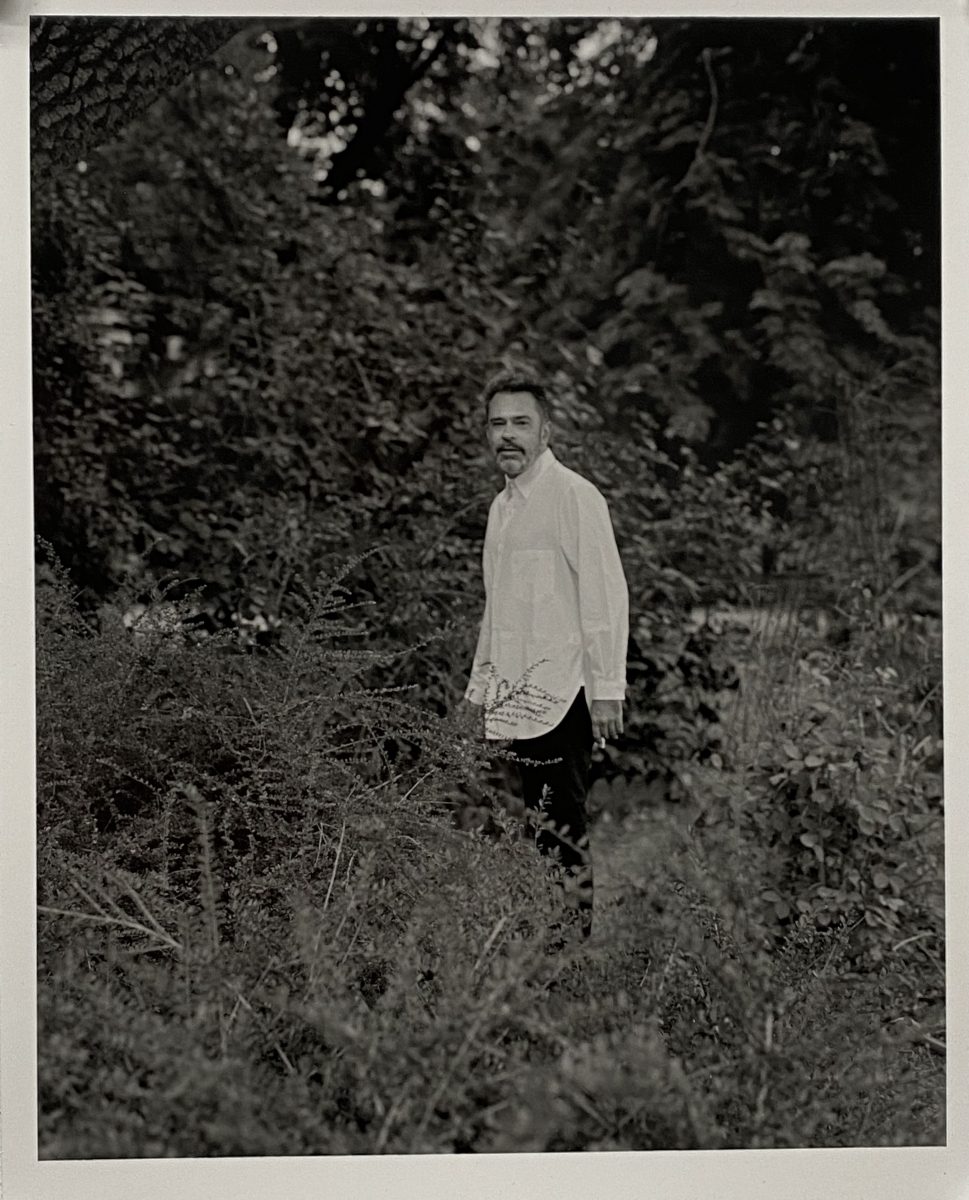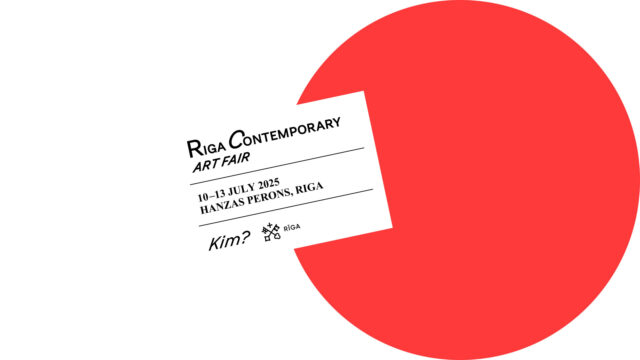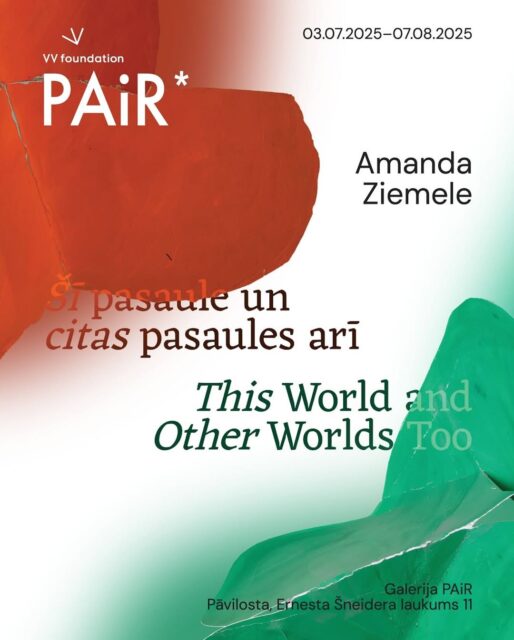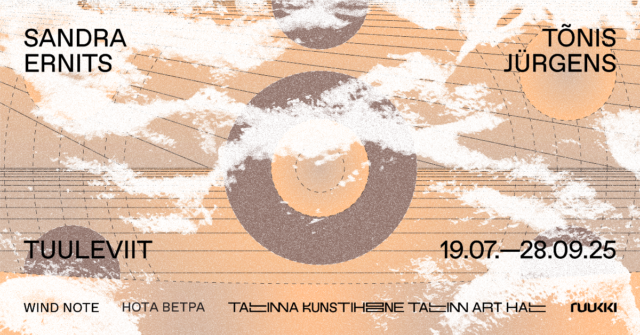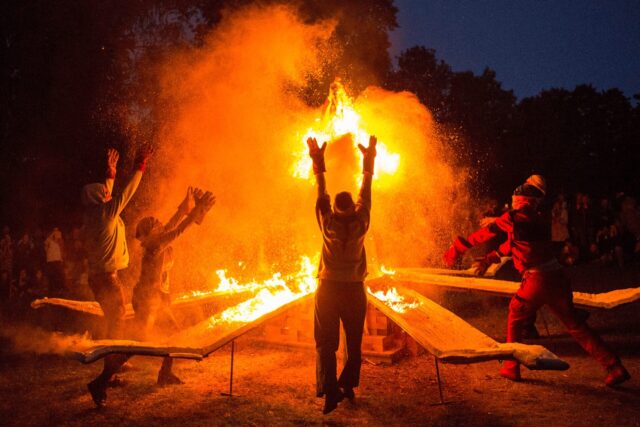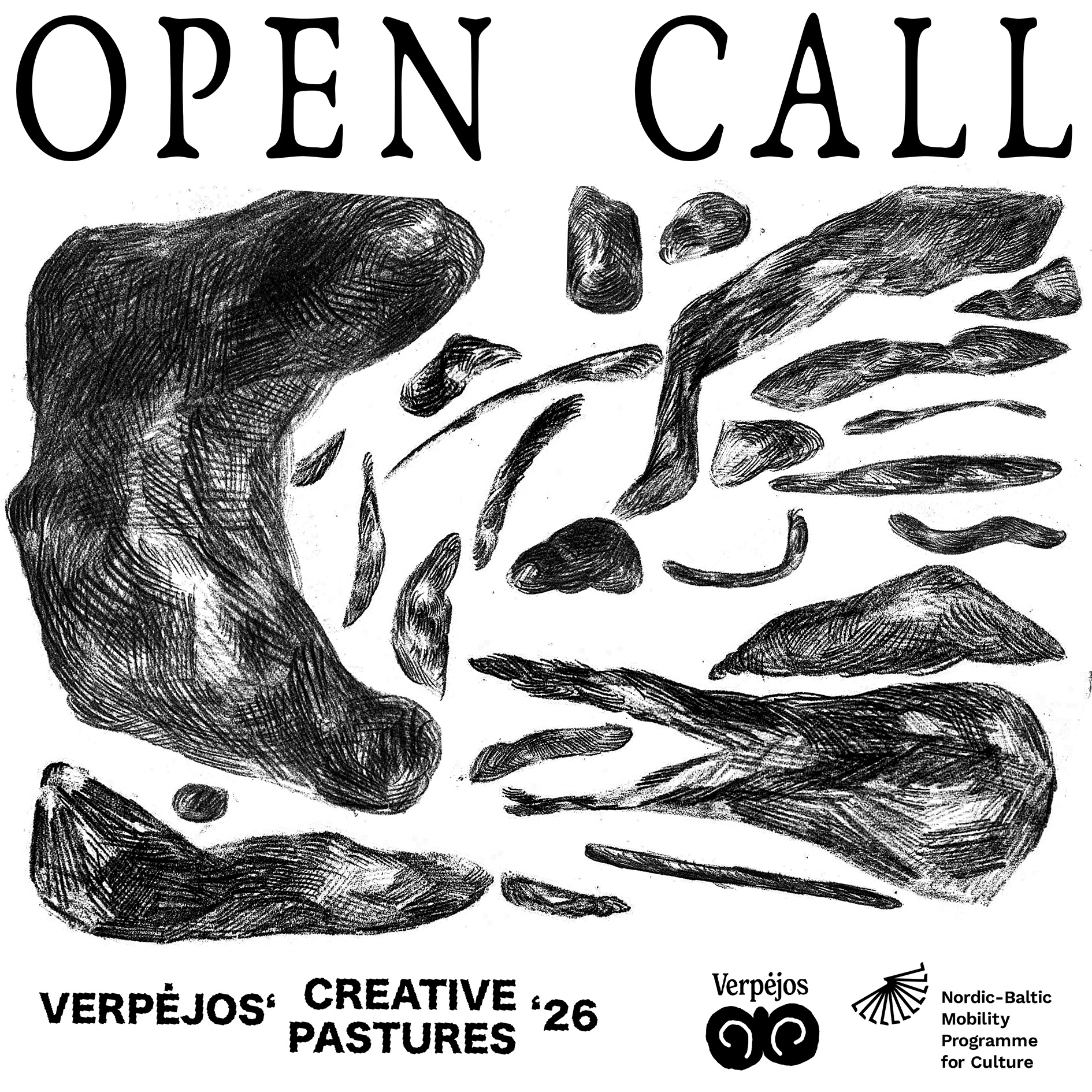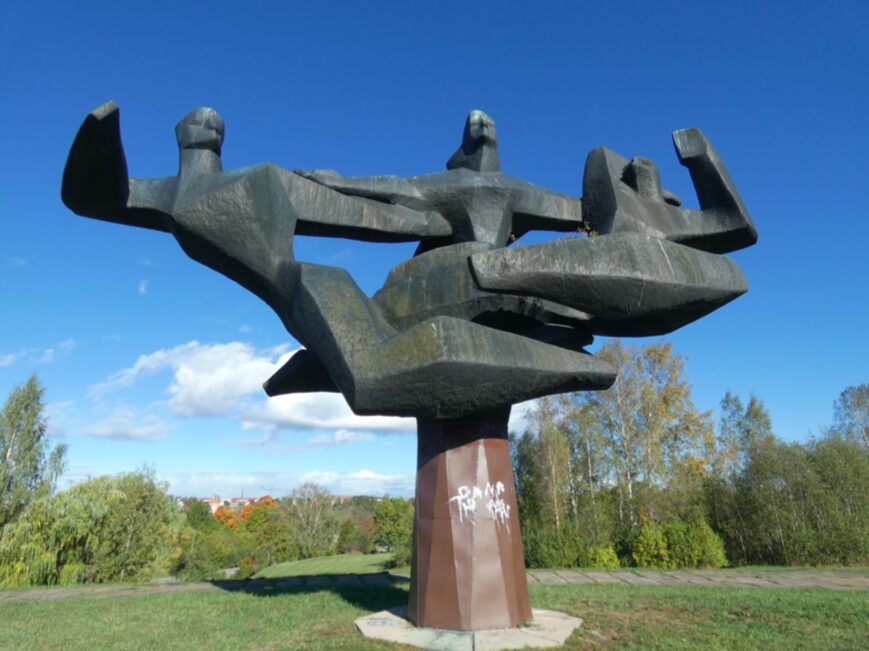Alberta Vengrytė: The invasion of Ukraine by Vladimir Putin’s regime on 24 February has caused a wave of discussions among the contemporary art community in Vilnius. During one such discussion, initiated by curator Valentinas Klimašauskas, a gathering of artists and critics talked about relations between Russia’s contemporary art scene and the country’s oligarchy, who are supportive of Putin’s regime. For instance, it is known that in 2016, Yekaterina Lavrova-Vinokurovna, the daughter of Russia’s foreign affairs minister Sergey Lavrov, who had formerly been the head of Christie’s auction house in Russia, together with Anastasiya Karneeva, founded the company Smart Art, whose main function was to invest in all stages of the country’s art production and representation management (from the very first stages of providing artists with materials and studios, to help with finding available funding and legal services, organizing exhibitions, and acting as an intermediary when targeting possible collectors) both in Russia and at an international level.[1] In this way, the work of Russian artists becomes not unlike hostages that fund the regime. There have been a number of such cases. What are your views on Putin’s dictatorial mechanisms in the Russian contemporary art market?
Raimundas Malašauskas: According to Kirill Savchenkov, one of two artists (together with Alexandra Sukhareva) with whom I was working on the Russian pavilion at this year’s Venice Biennale (and who also took part in the 14th Baltic Triennial, organised by Valentinas Klimašauskas), Putin is a ‘state of an environment’. It is much more than the tyrant whose name it carries … It is multilayered and covers a multitude of things, from institutions and laws to oligarchs and ordinary people, to the history of oppression and culture of fear in Russia. The symbiosis between the oligarchy, large amounts of capital, and the Russian state is very specific. If we talk about the art market or the art world, Russia is much more like the USA or China, and not Europe. The involvement of the state and other governmental structures in the art world is symbolic, but also ideologically effective. Art is bought, sponsored and boasted about by large capital. There are undoubtedly rich people who criticize the regime; however, they wouldn’t be rich if they weren’t favored by the very same regime. It’s all interdependent. On the other hand, if people such as Leonid Mikhelson and Roman Abramovich hadn’t opened contemporary art centers (Garage or V-A-C / GES2) and active research centers there, we wouldn’t know so much about Russian culture which criticizes [the regime], and there would be a lot less information about what the non-traditional, unofficial culture of the country is. As is often the case with contemporary art, the situation is both a blessing and a curse. Plus, those rich people can act very differently in the public eye; for instance, Abramovich is a well-known public figure who likes to be seen the context of contemporary art, whereas Mikhelson is a more discreet persona about whom the international art world has known very little for a very long time, even though he’s sat on the governing and advisory bodies of some of the biggest Western art institutions. Before opening the GES-2 culture house in Moscow, he put Urs Fischer’s sculpture The Big Clay in front of the building: the work thus became a deeply controversial object that polarized society. I don’t think Mikhelson himself expected it to provoke such contempt from the former Communist Party members or a singer Maksim Galkin (Ala Pugachiova’s husband), and many other celebrities and communities. Opponents saw the sculpture as enlarged excrement, thrust into the face of society and its morals; however, supporters saw it as a public introduction to contemporary art at the heart of Russia’s capital. Perhaps this ‘explosion’ had some influence on what people were expecting from the forthcoming GES-2.
Then came the time to open GES-2. Putin was the first visitor to be shown around the new culture house by Leonid Mikhelson himself. GES-2 opened with Ragnar Kjartanson’s project Santa Barbara. From what I’ve heard from my former colleagues there, the head of state praised the idea of the culture house, most likely wished them success in future achievements, and was photographed at the exhibition. It was a rather difficult experience for all the involved ones, especially since those who actually met him had to spend two weeks under strict hotel quarantine.
AV: As we attempt to find Russian art that offers an alternative to the politics of Putin’s regime, it begins to look as if works that seek to regard it from a critical perspective simply don’t exist. However, could it not be the outcome of international media censorship? What relevant political views do you encounter when working with Russian contemporary artists?
RM: Navigating ‘Putin as a state of an environment’ is a difficult task. I really respect Russian artists who manage to think freely and curiously in an environment like that, who find ways of getting around censorship. There are definitely artists who question the state of government [within their work], although it happens indirectly, via allusions. Certain topics are dangerous. For instance, the tragedy of the Kursk submarine, the Chechen wars, LGBTQ+ activism, or a critique of the Russian Orthodox Church might lead them to the police station. At the same time, Yulia Tsvetkova’s story, who was convicted for the ‘dissemination of pornography’ for her playful paintings of female sex organs, is an example of solidarity and activism: many activists and artists protested against the prison sentence. Unfortunately, her being able to walk around the city of Komsomolsk freely but with ‘a promise not to leave it’ was the furthest such positive forces can reach.
AV: Could you please elaborate on how you began collaborating with the Russian contemporary art community?
RM: It happened in 2018. I was invited to work with the main curatorial team of V-A-C foundation in Moscow, as a satellite curator, by its artistic director Francesco Manacorda. In 2017, he and I curated the Liverpool Biennial. He was the director of Tate Liverpool at the time. I’d visited Russia previously on three occasions. While living in Lithuania, my gaze was directed towards the West. I wouldn’t think much about Russia. Nevertheless, after having lived in the West for over ten years, having left Lithuania, I became curious: ‘What is Russia?’ And that was when I got the invitation from Francesco, who had recently been appointed artistic director of the V-A-C. That’s how the V-A-C foundation became my portal for getting acquainted with the Russian contemporary art community. Over a year and a half, I visited Moscow more than ten times. It was a chance to get to know the local art, and to experience the unique city of the world, the life going on there, to be in the capital of the former empire I’d grown up in. It really intrigued me. To see my own past in a broader context, and think, unfortunately so naively, that the empire was done. During that time, I met a bunch of wonderful people, who thought creatively and critically, with whom I hope to stay in conversation despite the current tragedy. The important thing is for them to keep safe and unharmed …
AV: What type of institution is the V-A-C?
RM: The V-A-C is one of the most complex projects I’ve ever worked with. It was founded by Leonid Mikhelson, who was himself inspired by Teresa Iarocci Mavica, an Italian who had come to Russia during the perestroika. Its full title is Victoria Art Contemporary. Victoria is the name of the founder’s daughter. When I joined the team, the V-A-C, which had existed and had been producing contemporary Russian art for a whole decade, was expanding. There were plans for new activities at the GES-2 culture house. This house was a former electricity station that used to produce electricity for Moscow’s tram network at the beginning of the 20th century. The station, reconstructed by Renzo Piano, was supposed to ‘move’ people, just like the electric trams used to. The versatility and the sheer intellectual flight of the future programme were a reflection of the scale of Moscow, as well as its revolutionary aims: to create an open, public space for different opinions, to work with immigrant communities, to set up freely accessible art workshops for Moscow artists, and to elaborate on transcultural narratives that respect the Western canon while simultaneously decolonizing it, as much as the Soviet heritage. It was clear that once it opened it was going to become the most visited place in Moscow. GES-2 and the M+ center in Hong Kong were probably the largest art centers in the world to open in 2021. The programme had five themed seasons planned ahead, namely Santa Barbara, Truth, Mother, Cosmos, and Barely audible. Each season consisted of several dozen discursive, educational and artistic projects, ranging from contemporary dance to Socialist Realism and science fiction futurology. Every project (which was supposed to happen but never will) could be discussed in great detail: a chronicle of all the twists and transformations would make a good novel. GES-2 opened last December (a couple of years later than planned, due to the Covid-19 pandemic); however, everything has changed tremendously in a couple of months. The curatorial team realized that a lot of the events planned for the general public would simply have to be discarded: working just next to the Kremlin and the Russian Orthodox Church of Christ the Savior would be enough of a reason for that, not to go deeper into intra-institutional complexities. And then, three months later, Russia started a war by invading Ukraine, although, as you well know, it is illegal to call it a ‘war’ in Russia, and everything changed drastically. Most foreign artists resigned from the forthcoming programme. It’s really hard to say what type of institution the V-A-C will be in the future.
AV: What prompted you to take on the curator’s role at the Russian pavilion for the 59th Venice Biennale of contemporary art, opening in the end of April this year?
RM: The invitation came from Teresa Mavica, the pavilion’s commissioner at the time, and both the artists, Alexandra Sukhareva and Kirill Savchenkov. That will probably always be the most unexpected invitation I’ve ever got in my life. The element of surprise, as well as my love for the artists’ work (I met Alexandra in 2010 when Carolyn Christov-Bakargiev and I invited her to d(OCUMENTA)13, and Kirill and I met in Moscow in 2019), were the main reasons I accepted the offer. It was a challenge. I asked myself what it meant to me, an inhabitant of the former empire’s periphery, to appear on its symbolic stage, despite coming from the West, namely Brussels, which had never belonged to the Russian Empire, obviously. What collision of post-colonial reactions takes place there? What types of reactions between different Russias, the official one and the one that sees through the latter, but nevertheless has to tread lightly in order to remain at least partly visible, will be formed in the pavilion? I will probably return to those (and other) questions from different perspectives many more times in the future. Certainly, my wish to see Russia as being more progressive than I’d known it to be was an illusion which nonetheless supported my decision.
AV: We are talking after you formally condemned Putin’s war and declared that, because of the current political situation, you and the artists will not represent Russia and participate in one of the most important contemporary art events in the world. Could it be said that this act is in a way performative, that it can alter the socio-political state of the country as it is today? What is your personal opinion on the cultural and political situation in Russia and Ukraine?
RM: I’m afraid, given the current regime, this act really affected the position of Kirill and Alexandra in their country. It looks as if everything will only get worse. As we speak, Mediazona is the only remaining independent news portal in the country. However, by the time people read our conversation, it will probably have ceased to exist [the website has been active abroad since 13 March, but according to a message there it is blocked in Russia]. How Western sanctions are going to affect the lives of ordinary people is another topic. It’s hard to talk about Ukraine: it is an epic tragedy. Liza German, a colleague of mine from the Liverpool Biennial, is curating the Ukrainian pavilion at the Venice Biennale. She managed to escape from Kyiv to a safer place. Actual survival: that’s what’s important there at this moment, and, of course, support to Ukrainians: empathetic, economic, military. Something that Timothy Snyder said about the Ukrainians keeps ringing in my head: “I feel like every day that they stay on the battlefield buys us a week, a month, a year of thinking about how things could be. “[2]

Alexandra Sukhareva. Labour Azul, 2015 and ongoing. Area of former Dmitlag.
AV: What new meanings does the work of Savchenkov and Sukhareva have today in the current political context?
RM: One of the essential themes in our project was premonition (предчувствие). Kirill and Alexandra expressed it differently in their work. Kirill was concerned about the rise of dictatorship, or in his words, of information autocracy. Meanwhile, Alexandra was diving deep into the premonition of an event in the most general sense of the word, to the shifting of coordinates, the order or organisational principles, evident in geology, language and experience. Our project was called 914. That’s the number you get when you take away the first ‘one’ from the date of when the Russian pavilion was built (1914). A few months ago, I still associated it with the removal of an imperial unit, a sort of nano-exorcism (there are four columns in the pavilion, I suggested to the artists that we add a fifth one, and remove the first ‘one’ from the date). However, today the first and only association is the beginning of the First World War …
AV: Could it be said that Savchenkov, Sukhareva and your team’s project for the Venice Biennale are typical of the critique of putinism?
RM: The project 914 was critical of the prewar political situation in Russia. In Kirill Savchenkov’s short story (which was supposed to be published in Venice), algorithms elicit testimonies from the revolutionaries via force and torture. It takes place in the distant future. In his story, the model 914 is active in the form of Russia’s pavilion, it is a ‘semi-lethal autonomic system operator able to create deep simulations. It seeks effective means to decrease agency.’ Alexandra Sukhareva had planned to show photographs from a forest which is full of corpses from the Volga-Moscow canal excavation work, the bodies of prisoners in the forced labour camp. She described the series like this: ‘The way the dead surrounding us address us defines how we ourselves exist. What happens within this communication depends on the efforts of hope. Hope is an instrument against the paralysis caused by fear and hate. After all, poems were being written even during the blockade.’ One of the leitmotifs of 914 was a deconstructed line from Anna Akhmatova’s ‘Poem without a Hero’: ‘As the past ripens in the future …’ Unfortunately, today the future isn’t protected from that past.
AV: Can you say how you and the artists came to the decision not to participate in the Venice Biennale?
RM: The premonition became performative and real. Just like the rest, we could feel the tension building near the Ukrainian border. It was evident that if war started, the Russian pavilion’s status would radically change, and nothing could make us stay there. That’s exactly what happened. Perhaps 914 will find other forms of existence, at another time, in another place, some time in the future …
AV: How do you perceive the relationship between art and politics generally? What is your opinion of the ability of the Russian contemporary art community to resist the ideological dictate of Putin’s regime?
RM: The situation in Russia is getting worse by the hour. Putin’s regime is making use of a general lack of a love of life, the worthlessness of individual life. The tragic, broken world-view welcomed war as confirmation of what it has anticipated. It was like the fulfilment of a tragedy that was expected by many intellectuals, consciously or subconsciously. A state of helplessness is one of the conditions and consequences of it. Some managed to flee to Armenia, Sakartvelo or Germany, but many have stayed, and are now in a state of fear, not knowing what to do … My former colleague, the choreographer and dance curator Olga Tsvetkova, stayed at the V-A-C, ‘with two Swan Lakes’, as she herself put it. As you know, Tchaikovsky’s Swan Lake is a very symbolic piece, it appears on Russian television screens and hides any real news like a veil at times of political crisis. The first time it was broadcast non-stop was after the death of Brezhnev, then later after Chernenko and Andropov. However, its longest run was during the coup in 1991, when the Soviet Union began to break up. Even the independent television station Dozhd suspended its programmes, and put Swan Lake on the screen as well. And Olga Tsvetkova had been working with contemporary choreographers, two of them were working on reinterpretations of Swan Lake …
AV: How was your decision to quit the Venice Biennale taken by other Russian artists?
RM: Unanimously. Although I am sure there are those who think differently.
AV: How can we express our support for the Russian contemporary art community?
RM: It might be best to ask the artists themselves. I asked Alexandra and Kirill. Their answers are given below.
Kirill Savchenkov: The most important thing is to provide a safe space for artists fleeing Russia and avoiding the threats, to facilitate their escape. Many don’t have enough money or visas to leave. A lot of them are running away from being prosecuted (talking about war crimes, or saying ‘no to war’ on social media, gets you 15 years in prison. Not all have the strength to express their opinion under such circumstances). Artists cannot leave due to cancelled flights, blocked credit cards, cultural boycott, or simply a fear of the consequences. The crucial thing to understand is that if we take away the voices of Russians who don’t agree with the war, and leave them in the Russian Federation, they will be the first victims of repression, since in the new reality they are enemies of the state. The more those fleeing are boycotted, the stronger the crystalization of fascism in the Russian Federation becomes. If people manage to leave, then maybe they’ll be able to work and take responsibility; however, that (taking responsibility) would have to be a personal choice.
Alexandra Sukhareva: I believe the artistic community should be given a chance to pause, and work out if they are ready to continue creating. That’s a deep abyss: can form be separated from feelings?
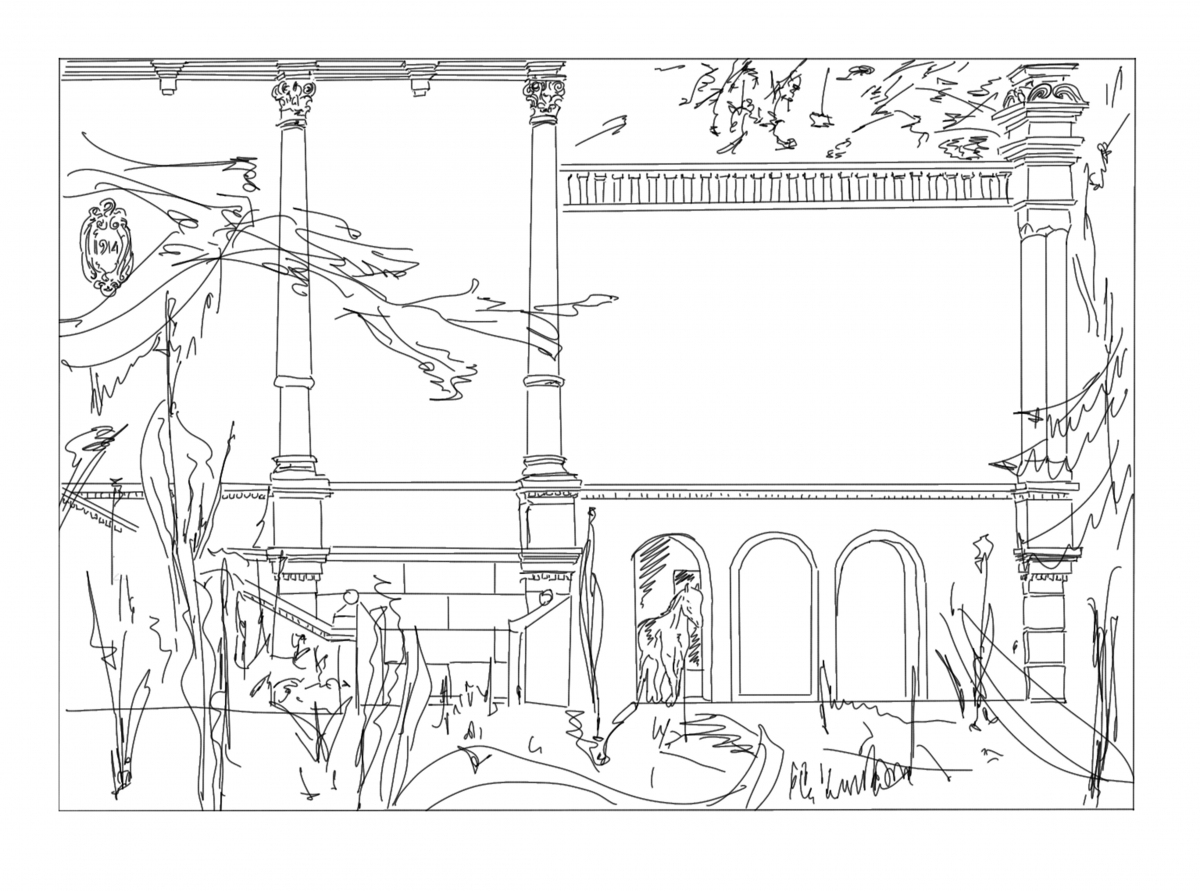
Kirill Savchenkov. The past ripens in the future, 2022. Sketch for novel for 914 and short animation film.

Alexandra Sukhareva. Labour Azul, 2015 and ongoing. Area of former Dmitlag.
[1] https://smartart.ru/english
[2] https://www.nytimes.com/2022/03/15/podcasts/transcript-ezra-klein-interviews-timothy-snyder.html
